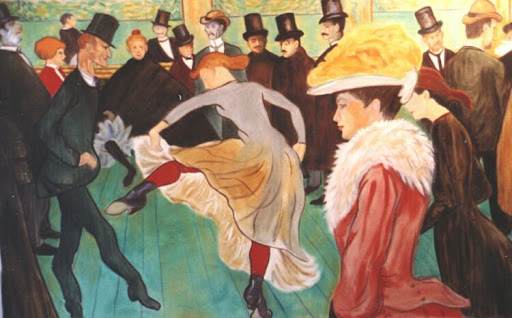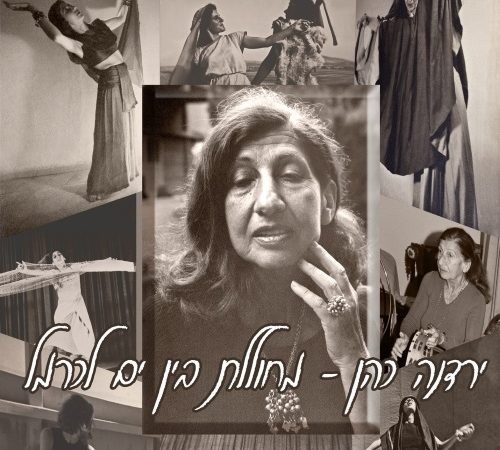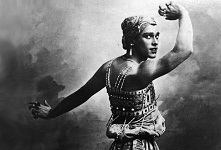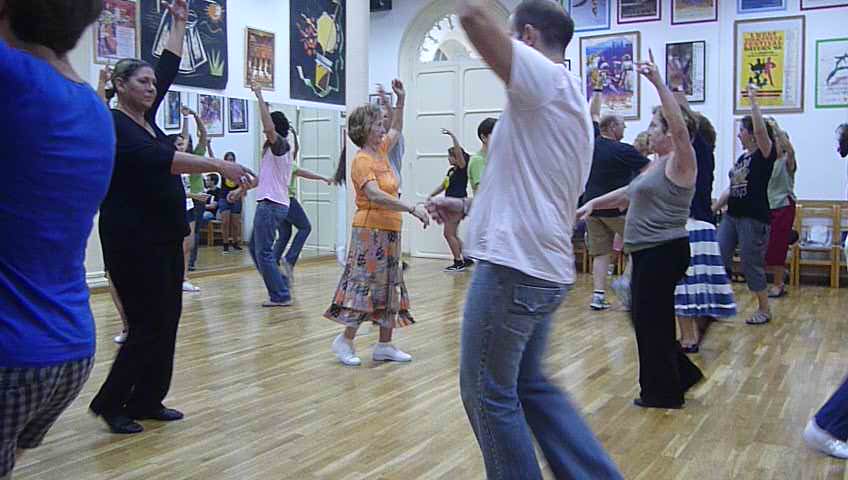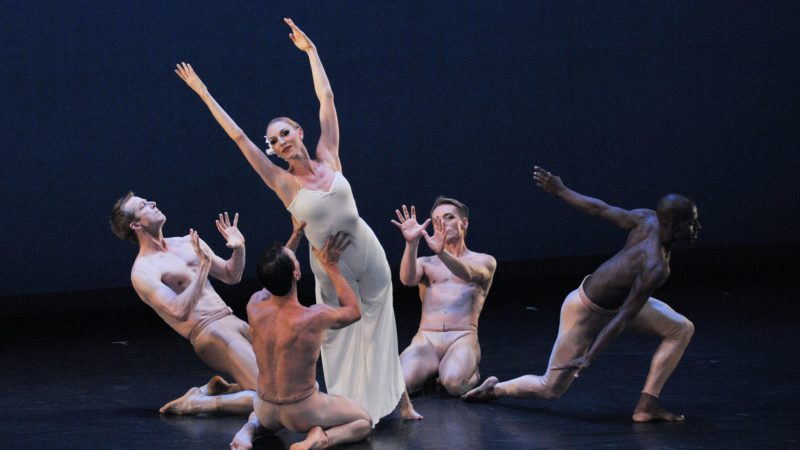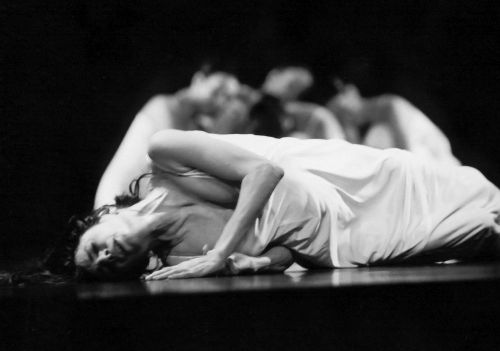Dancing Narratives: An Analytical Approach to the Narrative of the Ballet Fantastique
To dance stories means to tell stories to an audience. Astonishingly enough, despite the large number of story ballets and works of other dance genres narrating plots, dance analysis has neglected this side of the theatre performance. Thus, current research practice shows a clear focus on issues relating to choreography, movement and the performer. Moreover, the opinion, expounded by Italian lecturer Marco de Marinis (1993) and English dance analyst Janet Adshead (1988), that a performance can only be analysed via audio-visual recordings has resulted in a dogmatic treatment of dance analysis and its methods. The analytical model introduced with this article seeks to leave such established dogmatic paths of research. Firstly, the narrative of the performance is the centre of attention and will be seen as reflecting theatre-specific modes of storytelling as well as literary ones. Secondly, the materials analysed are not audio-visual recordings of performances, but the written text of the scenario or libretto. The ballet scenario is treated, in this study, as hybrid form lying between literature and performance. The simple fact that a text is written to be performed influences its written representation (Elam, 2002) and, thus, the ballet scenario can be seen as containing elements of the performance, which can be detected in its text. The main notion of this study is constructed upon this concept and, therefore, does not propose a method to analyse the live or audio-visually recorded performance, but the content of the programme note. Consequently, this article will draw upon examples from Cyril Beaumont’s libretto of Giselle (1841), which can be found in his book The Ballet called Giselle (1969, p. 39 – 52). It is hoped that this version of the narrative of Giselle (1841) is easily accessible for comparison.
Narrative analysis has a long-standing tradition in literary studies. Since this article is based on notions of this area, a few terms need explanation before venturing into theatrical narrative analysis. A clear distinction between story, plot and narrative has been established by literary theory (Forster, 1974; Prince, 1987; Jahn, 2002; Cobley, 2004). The term story refers to the chronological order of events of the narrative. These events are not connected and may be seen as single episodes that need to be arranged. The links between such episodes are generally referred to as plot. Here, logical-causal connections between the single events of the story are created and explain why a situation has come about. The underlying notion is that something happens, because something else has happened. Narrative, in turn, is the arrangement of these episodes and their logical connections. The chronological order of events as found in the story is usually not followed in the narrative. It can, therefore, be said that narrative is the individual portrayal of the arrangement of events and their logical-causal bonds. By changing the sequence of events and establishing new connections between them, a new narrative is created from the very same story. Having set up this distinction it is possible to distinguish between different elements of the narrative and study the theatrical representation of the ballet plot.
Theatre Conventions
The long tradition of theatrical storytelling has brought forward conventions concerning the treatment of onstage stories. In his Poetics (355 BC, 1973), Greek philosopher Aristotle outlines the structure of the performance as consisting of exposition, knotted middle section and dénouement. Furthermore, he identifies the reversal of action in the péripétie, which marks the turn from good to bad fortune and takes place between knotted middle section and dénouement. Each of these elements has its own narrative agency, and so it has become an established fact that the exposition introduces the most important characters and leads the audience into the fictional world of the plot. At this point of the performance, background information on the characters and their individual characterisations are given. Drama studies distinguish between a beginning ab ovo, in medias res and in ultimas res (Jahn, 2002). The first starts the plot with the birth of the hero/heroine and, then, continues. The beginning in medias res, as advocated by Roman poet Horace (13 BC, 2005), sets the point of attack close to the péripétie, or the open outbreak of the conflict, whereas in ultimas res refers to a point of attack set after the péripétie; namely in the dénouement. In this case, the main parts of the story may be told in backflashs or “analepses” (Genette, 1998, p. 25).
The example of Giselle (1841) shows the most commonly presented exposition. The point of attack is set close to the péripétie and so constitutes a beginning in medias res. In these opening scenes, the most basic information about the main characters, their emotions and relationships is given and the reader learns about their individual weaknesses. The performance commences with peasants leaving for work and has the gamekeeper Hilarion outline his emotions for Giselle and Albrecht, his rival. Furthermore, the two lovers are introduced and their relationship is shown to the audience.
With Hilarion entering Albrecht’s hut, the middle section of the performance begins. In this part, the evil character starts to mesh a web of intrigues, in which the main character or main characters are finally caught. The final outbreak of the conflict is delayed by an interplay between delay and continuation of the plot. In Giselle (1841), Albrecht’s hiding from the hunting party forms one part of the middle section, whereas Hilarion’s suspicion and spying is the second major element in this part of the plot, which creates curiosity and suspense on behalf of the spectator. For most of the first act, Albrecht succeeds in evading the royal hunting party and keeping up his relationship with Giselle. However, Hilarion has discovered evidence of Albrecht’s high birth and waits for the best moment to take revenge.
The péripétie as the reversal of action turns good fortune into bad. So far, the lovers, Giselle and Albrecht, have been happy, but, the moment Albrecht kisses Giselle after the divertissement, “Hilarion’s pent-up jealousy can no longer be controlled” (Beaumont, 1969, p. 43). He denounces Albrecht as impostor, and thus is the character to bring about the turn of action about. Drama has two distinct ways of dealing with this situation (Pfister, 2001): firstly, the audience may already anticipate what happens and is kept in suspense as to when this will happen. Secondly, the plot conceals what happens so that the enactment of this situation has an even greater impact. In Giselle (1841), the first variant has been chosen.
The dénouement provides a place where the conflict can be solved and a conventional ending may be reached in the closure. The ballet fantastique usually presents the white act as dénouement. In this section, the characters are tested and, according to their successful completion of the task, they may or may not be united in a relationship. For Giselle (1841), it can be argued that Albrecht manages this task, but, because Giselle is not the socially acceptable woman, he is not allowed to marry her. In this case, the adventures of the night have resulted in insights into matters of life and the duality of woman for the male character.
The conventions outlined above show the structural composition of the theatre performance and may be considered as reflecting a macrostructure. Nineteenth-century theatre tradition tends to always present them in this order, but their duration may vary and so give an emphasis on either the middle section or the dénouement. Such emphasis is created by locating the péripétie either at the end of the first act or well in the second. Whereas in the first case the dénouement becomes longer by shortening the first part of the story, the second variant allows a long and complicated knotted middle.
The theatrical microstructure is composed of monologues, sequences for the corps de ballet and the soloists, mimed and danced scenes and the traditional white act. All these elements are an essential part of the nineteenth-century ballet performance and, therefore, have to be considered. Here, the focus on the ballet scenario results in uncertainty concerning the precise location of these elements within the narrative. Although sections for soloists and the corps de ballet are generally indicated in the libretto, the ambiguity of textual hints does not allow for these scenes to be clearly identified. Moreover, these conventions are not bound to any hierarchical order as the one displayed in the theatrical macrostructure. They may appear at any point in the plot and so are the factors that attribute individuality to the ballet narrative. A different pattern of the succession of these elements may be found for each case study.
Narrative elements
In regard to the narrative side of the performance, two different structures can be observed. Firstly, there is a narrative macrostructure, which corresponds to the theatrical one. Secondly, a narrative microstructure arranges the various actions of the characters in a, for each case study, specific order. The macrostructure’s overlapping quality stems from the common use of Aristotle’s work for literary analysis and theatre too (Barry, 2002; Jahn, 2002). In their earliest beginnings, literary studies encompassed plays besides works now clearly identified as literature such as novels (Barry, 2002). The microstructure of the ballet narrative is, in return, constructed by the actions executed by the various characters of the plot. However, these actions need to contain a certain narrative agency, since otherwise the most important features of the ballet narrative would be found in lifting an arm or dancing. A focus on key-actions is in this sense most promising, as it discriminates superfluous elements and does not lead to an overwhelming number of actions. Such key-actions are considered functions in literary studies (Propp, 1975; Barthes, 1977). Only actions changing the course of the storyline should be considered as functions, which results in all main events being considered in an analysis. Hence, to leave the house at the beginning of the story represents a function, whereas another can be found in the fight.
For the case study used in this article, this means that Giselle declaring her love for Albrecht carries out such a significant action. Furthermore, Hilarion denouncing his rival as impostor changes the storyline and the curse of having to dance until the character dies represent such key-actions, which help to develop the plot. In the case of the narrative microstructure, no true structural solution to the arrangement of narrative elements is discernable in the ballet plot. Any action can appear at any point within the storyline and, therefore, no hierarchical order of such actions is attempted.
Characters of the ballet plot
The second group of characters shows Parental Figures and Trickster Figures. The Parental Figures encompass all parents caring for their child and supporting it. Such parental feelings are not only connected to mothers and foster mothers, but may also be exhibited by fathers, who care for their child. It is to note that Parental Figures support the relationship of the lovers and seek to prevent their child from harm. On the other side, Trickster Figures are the ones who cause havoc among all others. They plan intrigues and seek to separate the lovers. In the underlying case study of Giselle (1841), Berthe, Giselle’s mother, clearly represents a Parental Figure that seeks to protect her daughter from harm. The Trickster Figures of this ballet may be found in Hilarion, the gamekeeper of Act I, and Myrtha, Queen of the Wilis. It is to note that the evil actions of the Trickster are transferred from Hilarion to Myrtha, who continues to block the lovers’ way to find to each other. Also other ballets tend to distribute the sphere of the Trickster Figures on several characters, which all hinder the lovers in their relationship.
The conflict between the various characters arises from clashing interests and the strivings of each character to undo any lack or discomfort. One feature of the ballet plot is that it shows a distribution of the action according to one underlying notion; the conflict. The characters are divided into two groups: one supporting the lovers and one preventing them from achieving their goal. Such division is well-known from Greek theatre tradition and may also be found in the practice of Commedia Dell’Arte. Greek theatre divided the chorus into one group siding with the protagonist and another supporting the antagonist (Abbott, 2004). Hence, the characters of the play were separated into groups according to their position in relation to the conflict. Commedia Dell’Arte shows a similar distribution of action on the characters. Here, however, two pairs of lovers can be observed. One serious or ‘tragic’ couple seeking a relationship and another comic one, which has all actions go ‘wrong’ and so creates laughter. The distribution of action on the characters of ballet tradition is very close to the above-mentioned theatrical phenomena. In some cases, two pairs of lovers can be found and thus also a plot composition according to the example of Commedia Dell’Arte.
The characters and their individual strivings and desires may, therefore, be understood as representing another microstructure each. The clashing interests of these characters form the conflict, which can be labelled as the overarching macrostructure. Through the conflict the story’s development is ensured. This results in the conflict becoming the main notion of the ballet plot. It is inserted into the theatrical structures and expressed through the narrative ones.
From this outline, it is apparent that the analytical method presented is based on the notion of three distinct layers of analysis. Firstly, a theatrical layer has been identified that regulates the theatrical presentation of the narrative. It is composed of a macrostructure giving the structural outline of the performance and a microstructure that operates within the single parts of the macrostructure. This microstructure is not bound to any hierarchical order and, thus, all its elements may occur at any point and are frequently repeated. The second layer has been identified as the narrative one, which again consists of one macro- and microstructure. The narrative macrostructure overlaps with the theatrical one. Concerning the narrative microstructure, the outline and arrangement of key-actions provides an individual pattern of actions for each case study. In a third step, the characters and their conflict have come into foreground. Each character has his/her own personality and, therefore, can be seen as having a microstructure through his/her desires, plans and emotions. The entanglement of characters through their clashing interests results in the conflict, which can be understood as representing the macrostructure of this third layer.
The narrative model outlined in this article is, therefore, a connection between these three elements. They may be used in connection with each other or can be taken on their own to investigate either the theatrical or narrative structure of a particular work. Moreover, it is to note that this method has been composed to analyse the ballet scenario and not the audio-visual recording. Hence, textual analysis forms the basis of it and restricts it to the programme note. Finally, it is hoped that through the introduction of a method of narrative analysis the dogmatic focus on mere choreographic analyses will be broken so that this model can stand as equal next to other already-existing ones.
Bibliography
Abbott, H. [no further name given] Porter. The Cambridge Introduction to Narrative. Cambridge: Cambridge University Press, 2004.
Adshead, Janet (ed.) Dance Analysis. Theory and Practice. London: Dance Books, 1988.
Angiolini, Gasparo. Lettere di Gasparo Angiolini a Monsieur Noverre sopra i Balli Pantomimi. Milan: Gio. Battista Bianchi, 1773.
Aristotle. Poetics. London: Heinemann LTD, 1973.
Barry, Peter. Beginning Theory. An Introduction to Literary and Cultural Theory. Manchester/New York: Manchester University Press, 2002.
Barthes, Roland. Image Music Text. London: Fontana Press, 1977.
Beaumont, Cyril William. The Ballet called Giselle. London: Dance Books, 1969.
Bennett, Toby & Poesio, Giannandrea. Mime in the Cecchetti ‘Method’ in Dance Research Summer 2000, Volume 18, Number 1, p. 31 – 43.
Cobley, Paul. Narrative: The New Critical Idiom Series. London & New-York: Routledge, 2004.
De Marinis, Marco. The Semiotics of Performance. Bloomington & Indiana: Indiana University Press, 1993.
Duchartre, Pierre Louis. The Italian Comedy. The Improvisation Scenarios Lives Attributes Portraits and Masks of the Illustrious Characters of the Commedia dell’ Arte. New York: Dover Publications, 1966.
Elam, Keir. The Semiotics of Theatre and Drama. London/New York: Routledge, 2002.
Forster, Edward Morgan. Aspects of the Novel. London: Edward and Arnold, 1927 (first edition), 1974.
Foster, Susan Leigh. Choreography and Narrative. Ballet’s staging of Story and Desire. Bloomington: Indiana University Press, 1998.
Genette, Gérard. Die Erzählung. München: Wilhelm Fink Verlag, 1998.
Gray, Martin. A Dictionary of Literary Terms. Singapore: York Press, Longman, 1999.
Guest, Ivor. The Romantic Ballet in Paris. London: The Pitman Press, 1966.
Hawkes, Terence. Structuralism & Semiotics. London: Methuen, 1977.
Horace. Ars Poetica. Translated by Leon Golden. Accessed 22 May 2005; 13:006. http://www.english.emory.edu/DRAMA/ArsPoetica.html
Jahn, Manfred. A Guide to the Theory of Narrative. Accessed July 2002. www.uni-koeln.de/~ame02/ppp.htm
Lämmert, Eberhard. Bauformen des Erzählens. Stuttgart: J. B. Metzlersche Verlagsbuchhandlung, 1968.
Noverre, Jean-Georges. Lettres sur la Danse et sur les Ballets. Lyon: Aimé Delaroche, 1760.
Pfister, Manfred. Das Drama. Theorie und Analyse. München: Wilhelm Fink Verlag, 2001.
Poesio, Giannandrea. Carabosse Revisited: Enrico Cecchetti and the lost Language of Mime. In Proceedings Society of Dance History Scholars Twenty-First Annual Conference, University of Oregon, 18–21 June 1998b, p. 79–85.
Prince, Gerald. A Dictionary of Narratology. Lincoln/London: University of Nebraska Press, 1987.
Propp, Vladimir. Morphologie des Märchens. Germany [Frankfurt am Main]: Suhrkamp, 1975.
Stanzel, Franz K. Theorie des Erzählens. Göttingen: Vandenhoeck und Ruprecht, 2001.
Zimmermann, Bernhard. Die Griechische Komödie. Darmstadt: Wissenschaftliche Buchgesellschaft. 1998.
Zipes, Jack. Fairy Tales and the Art of Subversion. The Classical Genre for Children and the Process of civilization. London: Heinemann, 1983.
One of the most important elements of a story are its characters. Ballet tradition has brought forward several distinct stock characters, which are shown in ever changing combinations and conflicts. They can be divided into two distinct groups. The representatives of the first group are clearly connected to one or the other gender, whereas characters belonging to the second group are not bound to one particular sex. The first group encompasses the Hero, the Unthreatening Woman and the Threatening Woman, who all may be the main character of the plot. The Hero is depicted as a young man in search of his ideal partner and falls in love with any of the two women. However, the traditional ballet plot only supports relationships between the Hero and the Unthreatening Woman. Were he to love the Threatening Woman, the lovers separated in the end of the ballet. The Unthreatening Woman represents the docile side of femininity by refraining from a sexually active life and too sensual pleasures. Conversely, the Threatening Woman indulges in erotic innuendos and chooses her lover herself. She is the active predator and is generally shown as bacchante. In regard to Giselle (1841), it can be said that Albrecht represents the plot’s Hero, whereas Giselle embodies the Threatening Woman and Bathilde, Albrecht’s aristocratic bride, the Unthreatening Woman.
